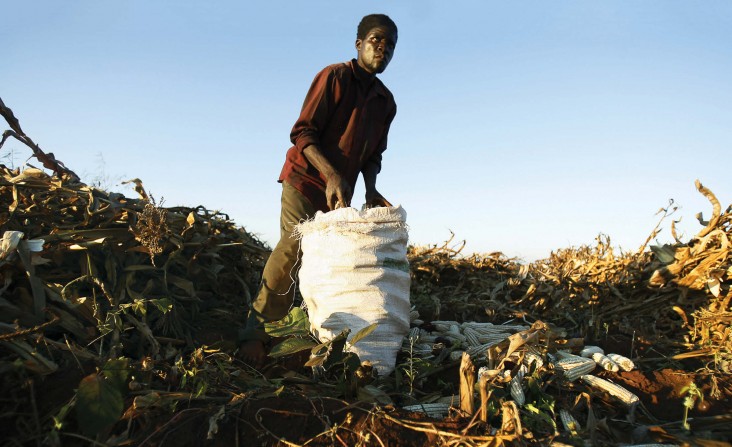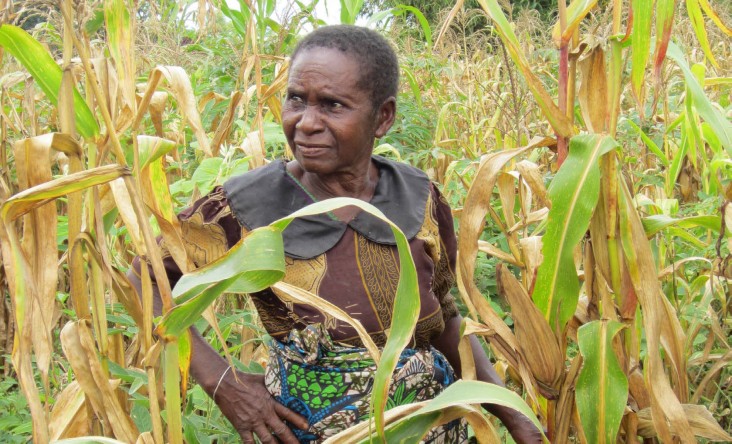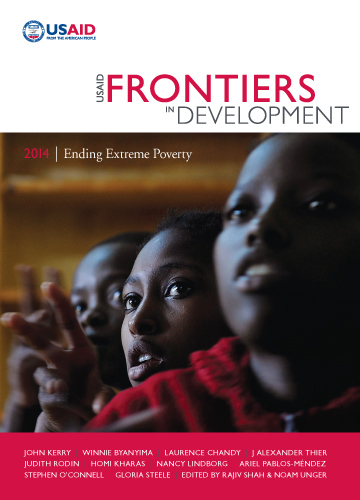Thokozile Chisala and Carter Hemphill
Governments often design programs for poor households and communities as a way of maximizing the development impact of scarce resources. However, politics that favor shortsighted goals over longer-term development can derail the distributive intent of such targeted initiatives.
Malawi’s fertilizer subsidy program, a major government program targeting the poor, demonstrates how political interference and weak controls can jeopardize a strategy intended to deliver direct benefits. It also underscores the importance of clearly understanding and planning for the local political interests that shape the design and implementation of such programs. Otherwise, we may overestimate this targeting’s expected benefits.

Pro-poor targeting gone awry: Malawi’s fertilizer subsidy program
Malawi remains one of the world’s poorest countries. Of the 84 percent of the nation’s population who lives in rural areas, 56 percent can be classified as poor and 24 percent as ultra-poor. Although 70 percent of the nation’s cultivated land is covered with maize,1 the country’s food security has worsened over the past several decades from self-sufficiency to a high dependency on food aid and imports. Smallholder farmers face low yields and soils with falling fertility. High transport costs, difficult access to markets and lack of credit hamper long-term investment. With few other natural resources and limited agricultural diversification, Malawi’s economic future is further complicated by a high fertility rate that outpaces the provision of social services and further strains the use of land and other resources.2
Malawi has been subsidizing agricultural inputs since the early 1990s. The latest, which began in 2005, is the Farm Input Subsidy Program (FISP). FISP supplies seed and fertilizer to boost maize production and improve progress toward nationwide food security goals, specifically goals targeting the “productive poor.”3

The program is intended to provide 1.5 million smallholder households with a voucher for 5 to 10 kilograms of seeds and 100 kilograms of fertilizer each growing season, enough for an average-sized family.4 In practice, households end up receiving fewer inputs on average because the number of eligible households has increased and because program recipients share their inputs with non-participants.
Since its inception, the government’s subsidy on fertilizer, measured as a percentage of the total cost to farmers, has become even more generous, increasing from 64 percent to more than 90 percent by the early 2010s.5 By 2013, the program cost about $150 million and comprised as much as 69 percent of Malawi’s agricultural budget.6
FISP was successful early on, increasing yields enough to make Malawi self-sufficient in maize. These gains reversed almost two decades of underperformance and contributed to Malawi’s growth between 2004 and 2009.7 Since then, Malawi has reversed course because of two major shocks during the 2012/2013 harvest period: a 50 percent devaluation and subsequent depreciation of the local currency and production shortfalls due to unseasonably dry weather.8 Prices of staple food, such as maize and cassava, rose four-fold, and the food security situation became acute in the southern region.
These recent shocks led to a reevaluation of FISP’s merits, yielding at least three reasons why its approach to targeting may be problematic. First, FISP enabled politicians to establish systems of patronage and rural support. On average, households in districts where the ruling party won the 2004 presidential election received 1.69 kilograms more in subsidized seed and 11.39 kilograms more in subsidized fertilizer than households in districts with comparable numbers of smallholder farmers where the ruling party did not win.9 During the 2008/2009 harvest, households in the southern region—the area home to then-president Peter Mutharika—received significantly more in subsidized inputs than other districts with comparable numbers of smallholder farmers.10
Targeting programs to the extreme poor can help nations focus the use of their resources. However, this targeting is more complicated in practice than in theory.
Second, opaque and changing criteria for beneficiary selection made the program even more prone to political interference. FISP initially used committees to identify the “productive poor” as “full-time smallholder farmers who cannot afford to purchase one or two bags of fertilizer at prevailing commercial prices, as determined by the leaders in their areas.”11 However, in 2008, the government expanded FISP’s official targeting criteria to include vulnerable households, regardless of whether these households owned land or had sufficient human resources for effectively using fertilizer. The dual targeting created an added level of ambiguity and caused the total number of beneficiaries to fluctuate between 1.4 and 1.7 million.12
Third, in rural communal villages, effective targeting can be further complicated by local group dynamics and community leaders who may not be entirely accountable to their constituents. The more narrowly targeted the program, the more pressures it may face from powerful interest groups that want to participate but fall short of the selection criteria. Targeting criteria also can create problems of “fairness” when many households are clustered around the cut-off for extreme poverty. Researchers have found that communities often perceive programs to be unfair if less than 80 percent of households are targeted.13
Researchers also have found a need for intensive, costly training and facilitation to reduce the incidence of elite capture when targeting by communities.14 In theory, this locally based approach to targeting should be cost-effective. Yet, in reality, such an approach can lack transparency because of cultural norms that keep community members from questioning the decisions of traditional leaders.15
The need for politically savvy programming
Targeting programs to the extreme poor can help nations focus the use of their resources. However, this targeting is more complicated in practice than in theory. The experience of Malawi’s FISP illustrates challenges that arise when governments already overwhelmed by the need to improve extremely low levels of service delivery must address short-term demands from their electorate. In contexts like Malawi’s, such programs can be especially prone to political interference.
Effective pro-poor programs require immediate political incentives that are consistent with long-term development objectives. Otherwise, resources used in efforts to target the poor may be redirected and misspent. Likewise, donors must understand the political dynamics in the countries in which they work, including how these dynamics could influence governments to take a longer-term view of policy reform and development. Donors’ understanding of—and engagement in—the host country policy process should be viewed as integral as sector-specific technical support.
Thokozile Chisala is a governance specialist in USAID/Malawi’s Local Capacity Development and USAID Forward Office. Carter Hemphill is an economist in USAID/Malawi’s Program Development and Analysis Office. The views expressed in this essay are their own and do not necessarily represent the views of the United States Agency for International Development or the United States Government.
1 Dorward, E. C. (2013). Agricultural Input Subsidies: The Recent Malawi Experience. Oxford, United Kingdom: Oxford University Press.
2 Malawi’s fertility rate among women ages 15-49 is 5.7 overall; 6.1 in rural, 4.0 in urban areas (DHIS 2010).
3 Rodney Lundukaa, J. R.-G. (2013). “What Are The Farm-Level Impacts of Malawi’s Farm Input Subsidy Program?” Agricultural Economics, 563-579.
4 Thurlow, K. P. (2014, March). “Malawi’s Farm Input Subsidy Program: Where Do We Go From Here?” International Food Policy Institute.
5 Rodney Lundukaa, 2013, p. 567.
6 Malawi Public Expenditure Review, 2013, p. iii. FISP costs 54,904.5 billion MK in FY 2012/2013, or 150 million (366 MK = 1 USD). FISP represents 4.6 percent of GDP or 11.5 percent of total budget expenditures in FY 2012/2103.
7 Chirwa, E., and Dorward, A. (January 2011). “The Malawi Agricultural Input Subsidy Programme: 2005-6 to 2008-9.” International Journal of Agricultural Sustainability, p. 13. The authors assert that while it is not possible to quantify the economic gains, the “very large increases in national maize production reported by the Ministry of Agricultural and Food Security crop estimates are an important component of the higher GDP growth rates reported for Malawi.”
8 Malawi Food Security Outlook Update – September 2013. (2013). Famine Early Warning Systems Network (FEWS NET).
9 Ricker-Gilbert, J., and Mason, N. M. (2012).“Disrupting Demand for Commercial Seed: Input Subsidies in Malawi and Zambia.” Indaba Agricultural Policy Research Institute (IAPRI).
10 Chinsinga, B. (2012). “Deconstructing the Success Myth: A Case of the Malawi Farm Input Subsidy Programme (FISP).” Instituto De Estúdios Sociaise e Econômicos, p. 10.
11 Rodney Lundukaa, 2013, p. 571.
12 Dorward and Chirwa as cited in Chinsinga, 2012, p. 11.
13 Chriwa, A. D. (2013). “Targeting in the Farm Input Subsidy Programme in Malawi: Issues and Options.” Future Agricultures. p. 14.
14 Chriwa, 2013, p. 14.
15 Chriwa, 2013, p. 14.
Frontiers in Development
Section 2: Politics, Global and Local








Comment
Make a general inquiry or suggest an improvement.